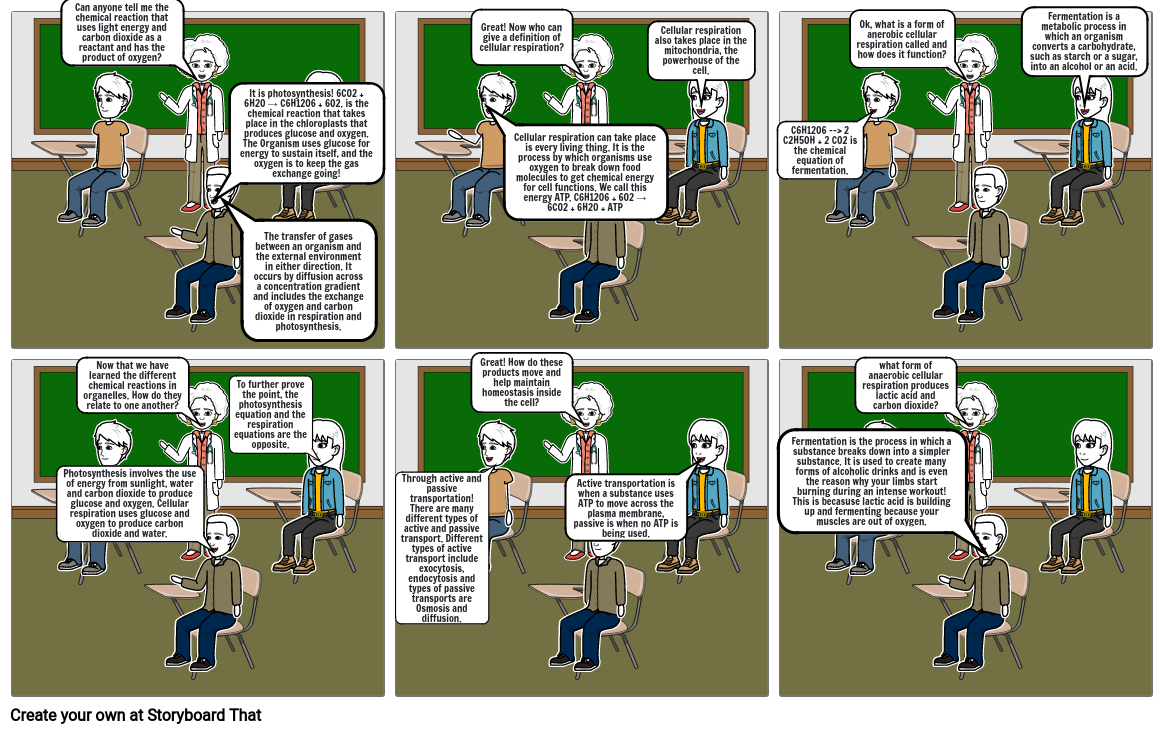Biology Story board

Storyboard Text
- Can anyone tell me the chemical reaction that uses light energy and carbon dioxide as a reactant and has the product of oxygen?
- It is photosynthesis! 6CO2 + 6H2O → C6H12O6 + 6O2. is the chemical reaction that takes place in the chloroplasts that produces glucose and oxygen. The Organism uses glucose for energy to sustain itself, and the oxygen is to keep the gas exchange going!
- The transfer of gases between an organism and the external environment in either direction. It occurs by diffusion across a concentration gradient and includes the exchange of oxygen and carbon dioxide in respiration and photosynthesis.
- Great! Now who can give a definition of cellular respiration?
- Cellular respiration can take place is every living thing. It is the process by which organisms use oxygen to break down food molecules to get chemical energy for cell functions. We call this energy ATP. C6H12O6 + 6O2 → 6CO2 + 6H20 + ATP
- Cellular respiration also takes place in the mitochondria, the powerhouse of the cell.
- C6H12O6 --> 2 C2H5OH + 2 CO2 is the chemical equation of fermentation.
- Ok, what is a form of anerobic cellular respiration called and how does it function?
- Fermentation is a metabolic process in which an organism converts a carbohydrate, such as starch or a sugar, into an alcohol or an acid.
- Photosynthesis involves the use of energy from sunlight, water and carbon dioxide to produce glucose and oxygen. Cellular respiration uses glucose and oxygen to produce carbon dioxide and water.
- Now that we have learned the different chemical reactions in organelles. How do they relate to one another?
- To further prove the point, the photosynthesis equation and the respiration equations are the opposite.
- Through active and passive transportation! There are many different types of active and passive transport. Different types of active transport include exocytosis, endocytosis and types of passive transports are Osmosis and diffusion.
- Great! How do these products move and help maintain homeostasis inside the cell?
- Active transportation is when a substance uses ATP to move across the plasma membrane, passive is when no ATP is being used.
- Fermentation is the process in which a substance breaks down into a simpler substance. It is used to create many forms of alcoholic drinks and is even the reason why your limbs start burning during an intense workout! This is becasuse lactic acid is building up and fermenting because your muscles are out of oxygen.
- what form of anaerobic cellular respiration produces lactic acid and carbon dioxide?
Over 30 Million Storyboards Created

